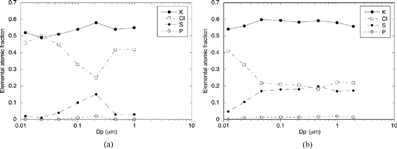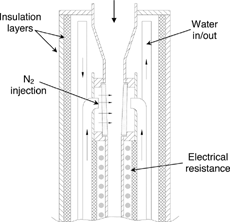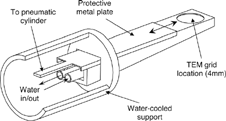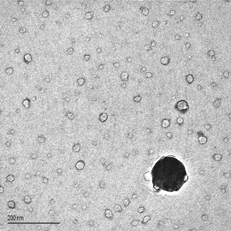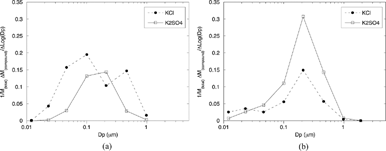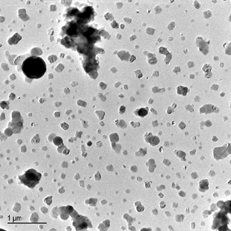Figures & data
FIG. 4 Elemental mass composition of the fine particles emitted in orujillo combustion in a previous EFR experiment (at 1300°C and 5% O2 in excess).
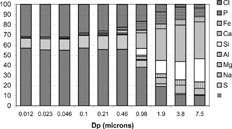
FIG. 5 TEM-XEDS analyses of samples collected with the AQPS probe at 900°C, 560°C, and 360°C burning orujillo. α and β refer to the Kα and Kβ lines of the potassium spectrum, respectively. Curves have been normalized by the height of the potassium (Kα) peak.
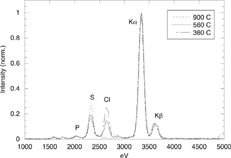
FIG. 13 TEM-XEDS group analysis of the particles collected at the outlet of the dilution probe when sampling at 1300, 900, and 560°C.
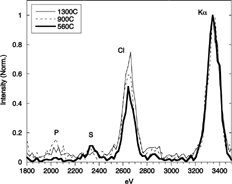
FIG. 8 Macroscopic (∼20 × 20 μm2) analysis of the samples collected, near the probe and 3.7 s after it at 1300°C.
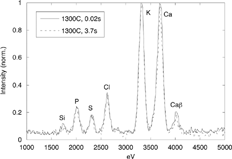
FIG. 7 TEM-XEDS analysis of the ultrafine particles collected at 1300°C and 900°C. The energies associated to chlorine and sulphur (Kα lines) are indicated for reference.
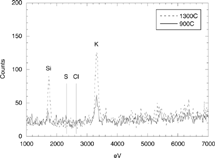
FIG. 9 TEM image of a sample collected with the AQPS at 900°C and after a delay of 0.02 s from sampling to impaction on the TEM grid.
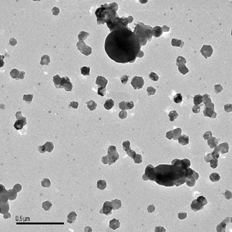
FIG. 10 Elemental atomic composition vs. size of the particles collected with the dilution probe at 900°C (a) and 560°C (b), determined with the BLPI and SEM analysis.
